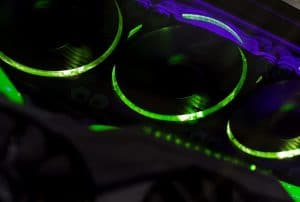 Companies in different industries define the benefits of streamlined electrical cooling differently. For example, in many manufacturing environments, efficient and eco-friendly electrical cooling can be most beneficial to the company’s overall energy costs and level of productivity. In areas like pharmaceutical packaging and food & beverage manufacturing, the benefits that matter most may also include the higher level of safety and eco-friendliness that heat exchangers provide. In most applications, however, the advantages of streamlined heat exchanger technologies focus mainly on improving key efficiencies while minimizing the overall costs of electrical thermal management.
Companies in different industries define the benefits of streamlined electrical cooling differently. For example, in many manufacturing environments, efficient and eco-friendly electrical cooling can be most beneficial to the company’s overall energy costs and level of productivity. In areas like pharmaceutical packaging and food & beverage manufacturing, the benefits that matter most may also include the higher level of safety and eco-friendliness that heat exchangers provide. In most applications, however, the advantages of streamlined heat exchanger technologies focus mainly on improving key efficiencies while minimizing the overall costs of electrical thermal management.
The automation of electrical cooling
Automation has been a driving focus for much of technology’s advancements over the years, and that includes in the realm of thermal management. The goal of creating efficient and reliable automated systems is to help improve overall efficiency by taking over repetitive processes. For electrical cooling solutions, however, the ability to automate operations has been hindered by the high demands of traditional cooling solutions, such as air conditioners and air compressors. Solutions that rely on high amounts of energy and frequent maintenance and repairs can be counterintuitive to the goals of automation. However, with heat exchangers that naturally transfer waste heat with minimal energy and equipment, companies have gained the ability to nearly completely automate their cooling solutions.
Supplementing energy with waste heat
The key to how heat exchangers operate is the method they use to transfer electrical waste heat. This involves utilizing an eco-friendly cooling fluid that’s able to rapidly absorb the waste heat, then transfer and dissipate it safely once it’s away from sensitive electrical components. Heat transfer processes don’t require the same amounts of energy or complex equipment as more conventional solutions. Also, the ability transfer heat has given many companies the ability to repurpose that heat in order to supplement their energy needs in other processes. Using the waste heat collected from electrical enclosures, companies can reduce their energy costs and consumption in other operations such as wastewater treatment and more.
Optimizing space within most applications
Because of their ability to optimize electrical cooling using more streamlined methods, heat exchangers have also become popular for their more streamlined designs. Accommodating the equipment necessary for more traditional cooling methods can require large amounts of space, which can make streamlining technologies that rely on them more complicated. However, the process of transferring waste heat with an eco-friendly cooling fluid can be accomplished in a variety of methods, and within a variety of different heat exchanger designs (such as heat pipes or cold plates). This allows companies to optimize the space within more advanced applications while still benefiting from advanced, high-performance electrical cooling.
For more information about the efficiencies that heat exchangers naturally enhance, call Noren Thermal Solutions in Taylor, TX, at 866-936-6736.







